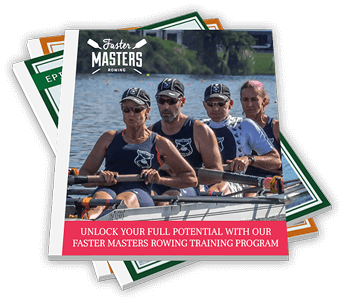Daunting? Hell yes. Listen to our guide which shows you what "tricks" you need to have and how to use them with your crew.
Timestamps
00:30 Two essential calls
I've got to cox a race and I don't know what I should be doing. The broad formula you need.
What's expected of you - steer the boat carefully around the course to the best possible route that you can. Take the straightest route and when you steer, take as tight a turn as you can without disrupting the crew rhythm.
Think of the river as if it was a road and you are driving a car. In general you gent to be in the middle - judge the distance between the tip of the blades and the bank on both sides of the boat to see if you are positioning well. For corners, water flows in a straight line and bounces off the bank as it bends around - think of this as lots of little straight lines and rebounds as the current adjusts for the curve of the bank.
If you are going round a corner to your right hand side - the deeper water is on your left hand side where the current has scoured out the bank (a slip off bank on the right and an undercut cliff on the left). The fastest water is nearer the cliff on the left hand side. So position your boat towards the left hand bank and get one third of the river between the boat and the left hand bank, two thirds of the river on your right hand side. After the corner is done and you're on the straight - re-position the boat so you are in the middle 50:50 of the river on each side of the boat.
Rowing against the stream - it's the opposite - hug the bank so you're close enough so you don't have the stream moving against the boat. The rule of thumb of thirds (one third of the river between your hull and the bank) works quite well as the current is usually concentrated in the middle third of the river. Steering is likely what you won't have problems with as you are an experienced steerer.
05:00 Motivating the crew
Have two calls - technical call - pressure call (working harder).
You should be able to work out what motivates your crew and what they are skilled at doing. For the pressure call - 10 strokes working harder - will increase your boat speed for ten strokes. Your job is to work out what the right technique call is that supports the pressure call. Speak to the coach and crew - what are the aspects of the stroke technique which they find harder to do when they're tired.
You only need ONE technical call.
Use the calls in combination during the race - pressure followed by technique or vice versa. In the race - if you do the technique call first - improve the technique over 10 strokes and then follow that up with a pressure call so they hold onto the technical aspect while they add the pressure. Or do pressure first to increase the boat speed and then use the technique call to maintain the higher boat speed afterwards. You must practice this in training so the crew knows what to expect and the nuance of the two calls.
08:30 Landmarks
When to use these calls in the race? Landmarks like a building, a bridge or a bend in the river are good markers. If the landmark includes a steering change - you have to do the call before you start to steer because the boat slows when you steer. Get increased speed before the steering manoeuvre. As you finish the steering, do another call as you are straight and have passed the landmark. Get the crew to look at the bridge / landmark so they can see it moving into the distance.
10:30 Quarter the race
Big picture - divide the race into quarters. You have to know what's the beginning and end of each section. Have a focus for each quarter.
- First - off the start and into race rhythm
- Second - maintaining boat speed, good run and efficient movement
- Third - make it hard on the competitors - hard for them to get past you
- Fourth - push for the finish line
Other things also happen e.g. overtaking / being overtaken. Build these into your race plan if they happen. "Walking" the crew past another crew - what to say.
13:45 Speed as a horizontal line
Your average speed in the race - the boat speed will change. Your job is to take the crew back up to the horizontal ideal speed line. A good cox can motivate and encourage. Do not talk all the time - silence for 5-10 strokes gives the crew greater focus and clarity of purpose when you do speak. Give the crew enough time to do the things you have called - 10 strokes minimum.
You must be able to judge how many strokes it takes the crew to cover a certain distance. Look at a landmark and estimate the stroke count - practice on your home course against a buoy or tree. You must be accurate to decide when to start the call as you lead into landmarks and the finishing sprint.
Want easy live streams like this? Instant broadcasts to Facebook, YouTube, LinkedIn. Faster Masters uses StreamYard: https://streamyard.com/pal/d/5694205242376192

